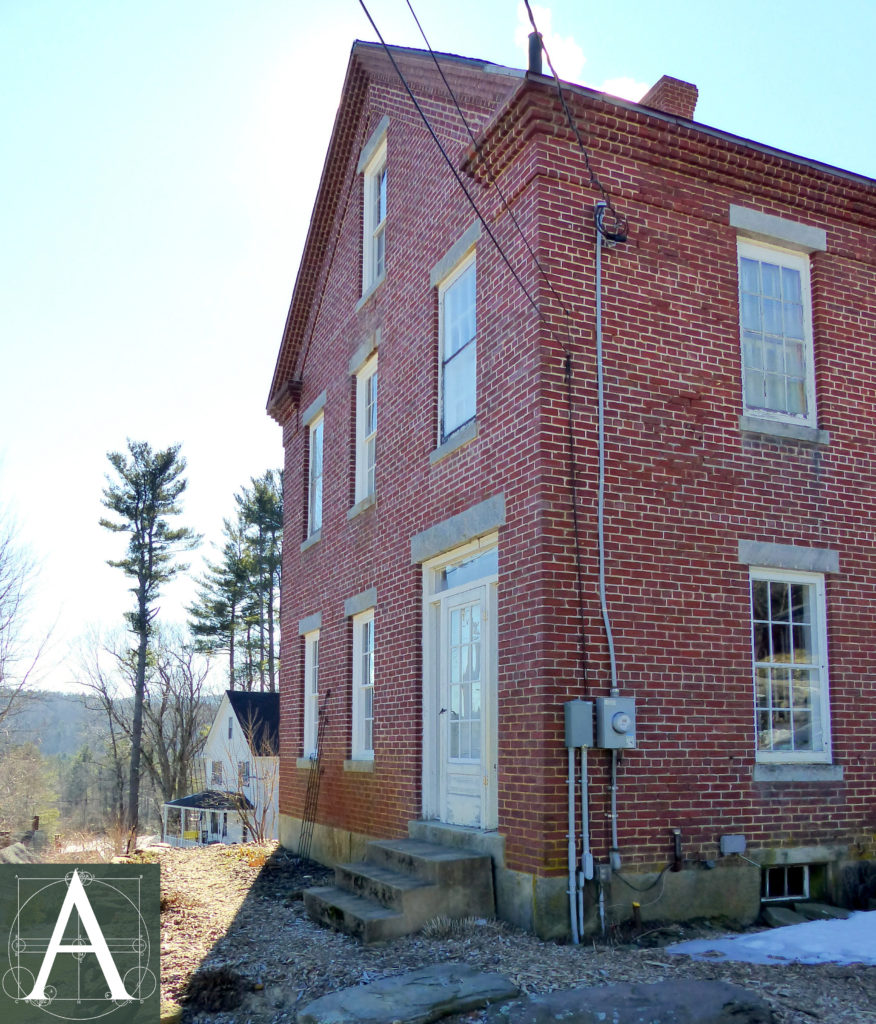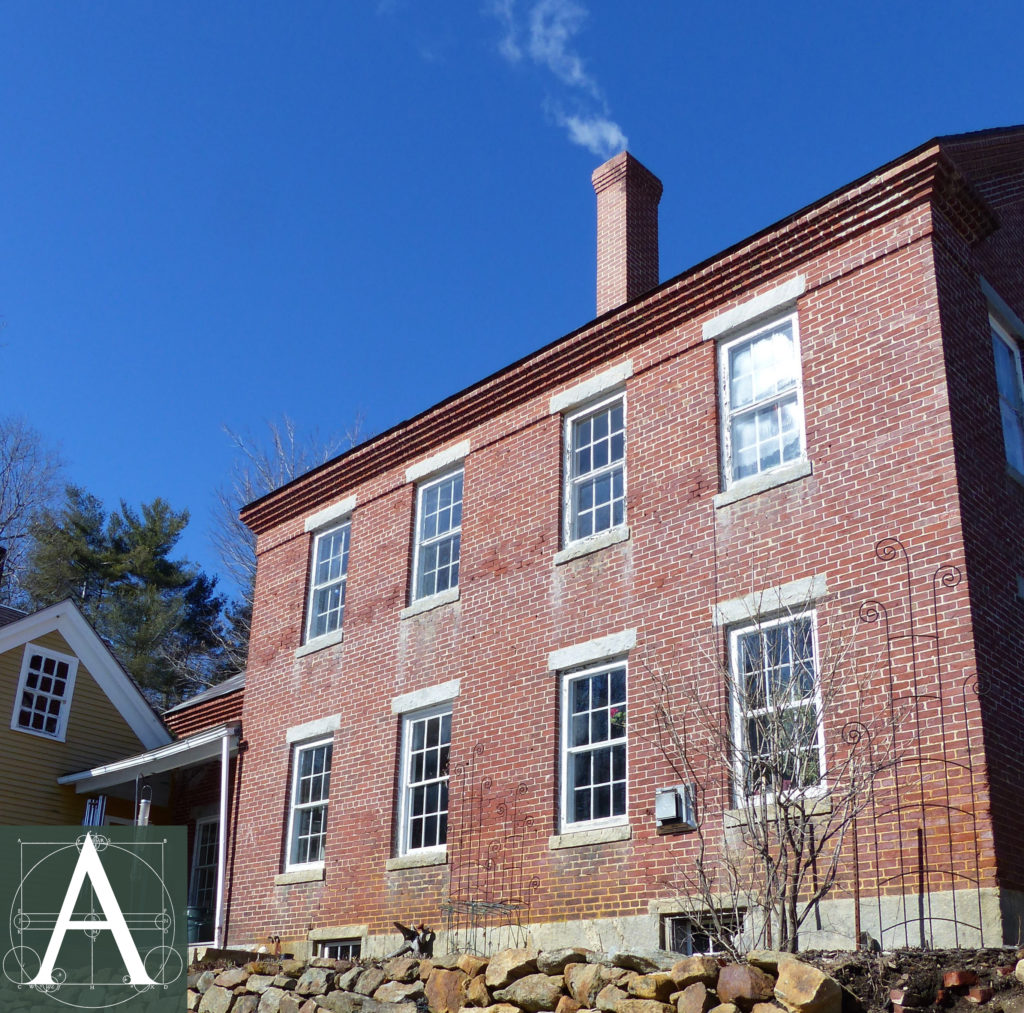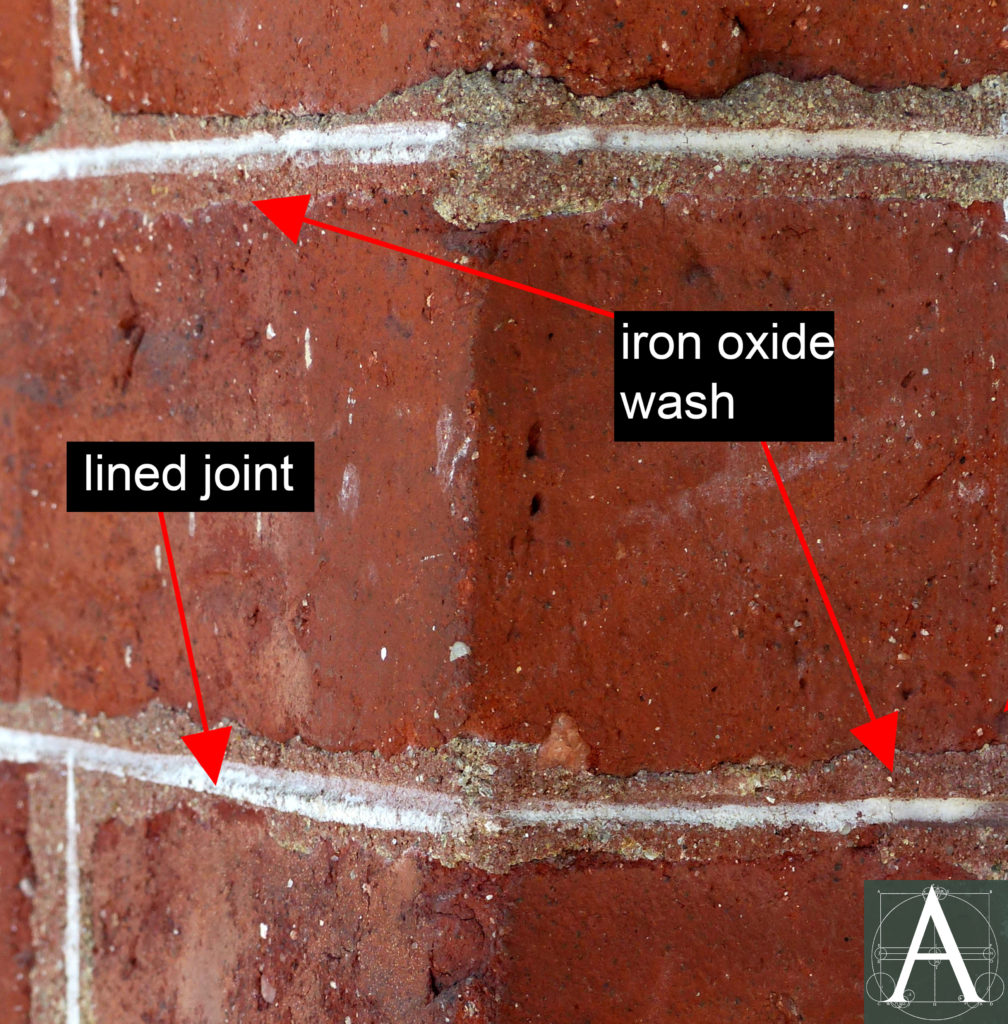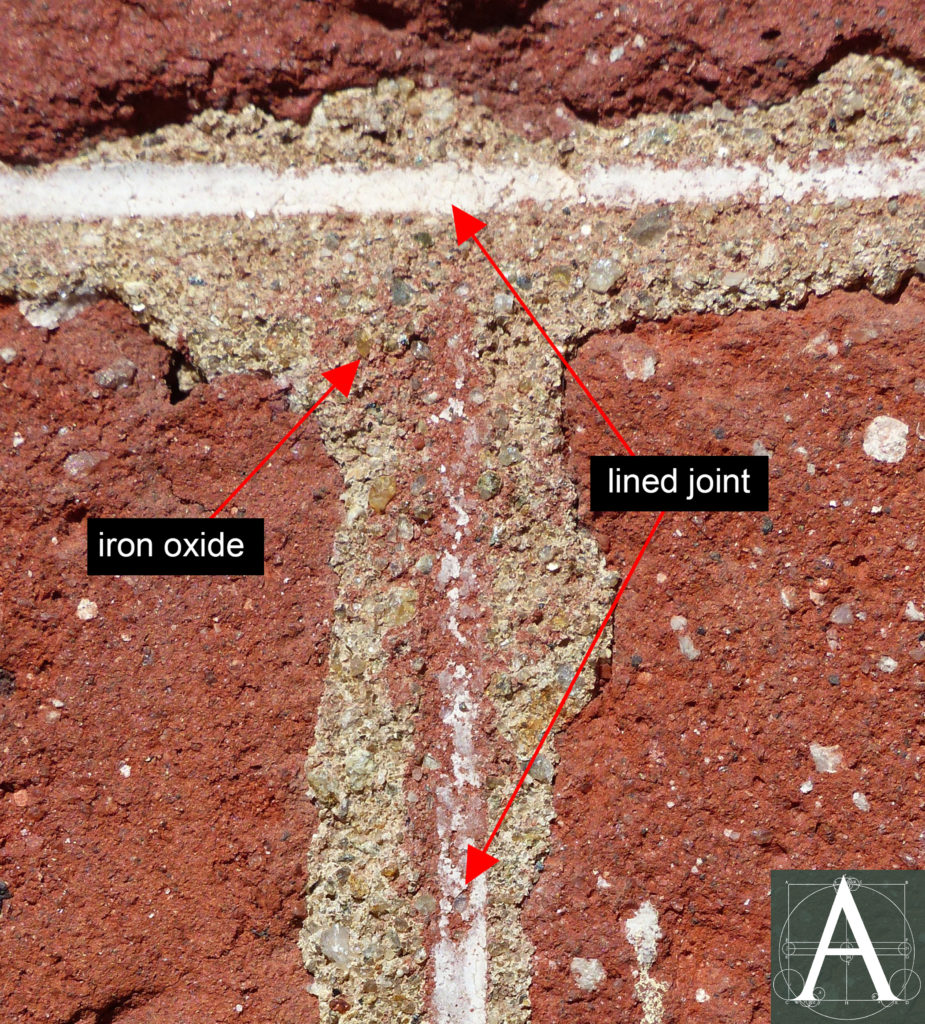Notable Elements
- Bricks washed with red ochre (iron oxide); tooled mortar joints lined out in white [Exterior]
- Quirked window mouldings to receive mastic [Exterior]
History
The Alfred Colony House was built as the Mill Superintendent’s House, either by or for the Cheshire Mills during a major period of expansion that resulted in the construction of Cheshire Mill #2 (1859), the Cheshire Mills Company Boarding House (1851), smaller scale brick cottages at 5 School Street & 8 School (1853-1860), and a storehouse known as The Temple (1850-1860). The house’s scale and brick construction reflect the higher status of its intended occupants, as the cost of brick construction was approximately 15% higher than that of wood, a factor documented in 1850 when two cost estimates were made for the construction of the Cheshire Mills Company Boarding House (a two and one-half storey building 73’ long and 36’ wide); construction in wood was estimated at $2,211.95 while the cost of building the same structure in brick was estimated to be $2,538.47. The house’s date of construction has not been precisely established, but its range has been determined by its appearance on local maps between 1853 and 1863, and by its architectural style, which matches other buildings constructed during this period of expansion. The house belonged to Alfred Colony (1828-1876), a member of the family that acquired the Cheshire Mills in 1850. Surviving company records have not been researched, but may contain more detailed information about the building’s construction and original use.
Date
1853-1863
Builder/Architect
Unidentified – information may remain in manuscript company records
Building Type
Side-hall plan Greek Revival-style single family house with a gabled facade. Characteristic of its type, the main block of the house is a two-storey structure with a lower, one-storey kitchen ell attached to its rear (west) elevation.
Foundation
Rubble stone below grade with a cap of quarried granite blocks above grade
Frame
Wooden joists and partitions set within bearing-wall masonry
Exterior
Both the two-storey main house and its original one-storey rear ell are constructed of red brick laid in a common bond of nine rows of stretchers to one row of headers that bear a traditional masonry finish. Brickwork was originally washed over with red ochre (iron oxide) to unify its color after mortar joints had been tooled to provide uniformly straight, narrow channels. Following the red ochre wash, mortar joints were lined out in white to give the overall appearance of finely pressed brick facings. The composition of the white lining material has not been analyzed, but it seems likely to be white lead, based upon its tenacity. Lining-out of this type does not appear on the earliest surviving mill buildings in Harrisville (ca. 1832-1834), but is found on nearly all brick buildings constructed in the village between 1838 (The Harrisville General Store) and the early 1860s when the last buildings of the Mill’s ca. 1850-1860 expansion were completed.
The porch at the south elevation of the rear ell preserves the best examples of lined-out brickwork due to its sheltered location. The removal of the original porch ceiling has exposed brickwork that was never meant to be seen, revealing that it was also washed over with iron oxide, and its joints were tooled, although only small amounts of lining-out are faintly visible. Other masonry details, such as the rectangular window lintels and sills of rock-faced granite and the massive brick entablature at the eaves, are characteristic of the period and match details found on other buildings constructed for the Cheshire Mills.
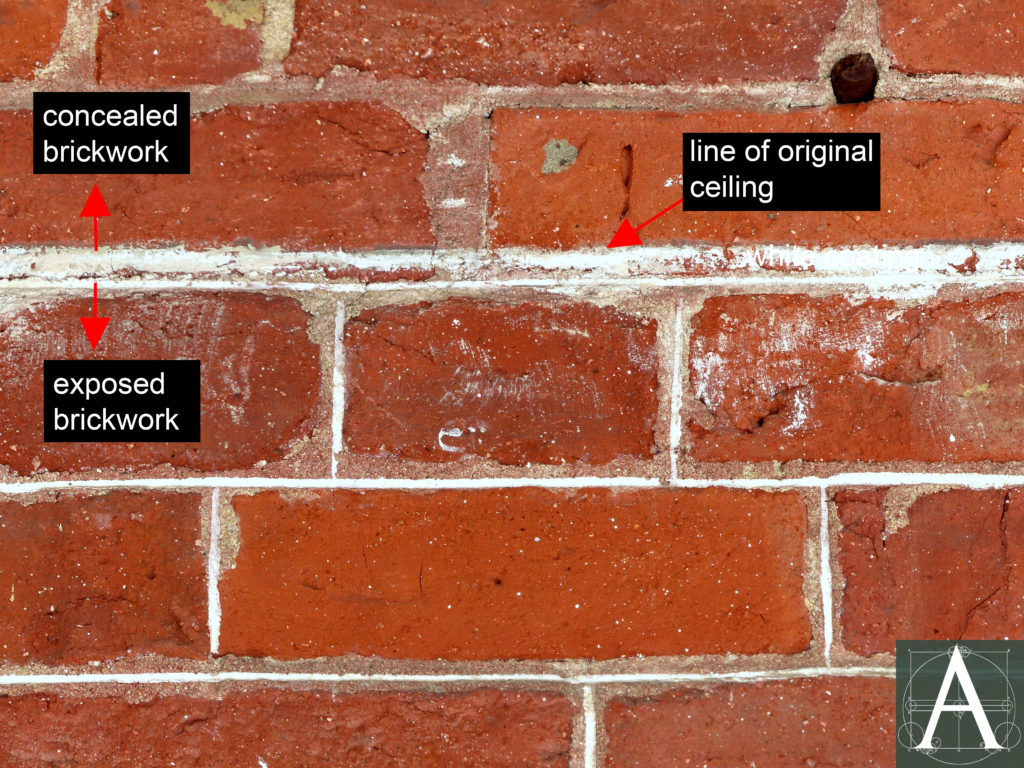
Rear porch (south elevation) showing brickwork sheltered from weather; upper portion was originally concealed by a ceiling
Windows are set in brick surrounds within which their wooden cases are trimmed with quirked Greek Revival style mouldings. The quirks are set against the brick jambs and granite head where they provided a channel in which mastic was installed to seal the gap between the masonry jamb and wooden elements. This detail survives in fragmentary form largely obscured by modern caulking on several windows; more complete examples survive at Cheshire Mill #2.
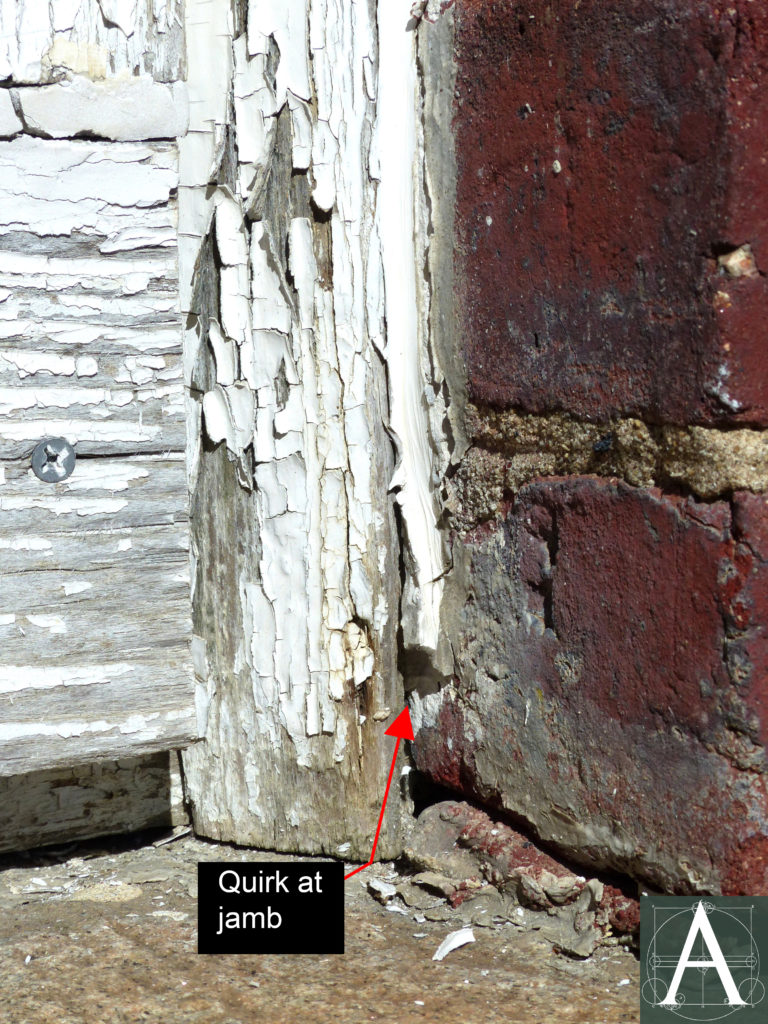
Characteristic Greek Revival-style moulding at window surround with quirked edge to receive mastic caulk
Roof
Pitched roofs – coverings not observed
Interior
Unknown
Contributor
Field observations provided by: Linda Willett & Frederick O’Connor, Historic Harrisville, Inc.
Brian Pfeiffer, architectural historian, editor
Sources
Historic Harrisville, Inc. Archives:
Individual Survey Form from the “Harrisville Historic and Architectural Resources Survey”, September 1983. (unpublished)
“Cheshire Mills – Historic Structures Report.” August 15, 2001. (unpublished)
National Park Service. “Harrisville Historic District National Register Nomination” June, 1977. http://focus.nps.gov/pdfhost/docs/NRHP/Text/71000072.pdf

